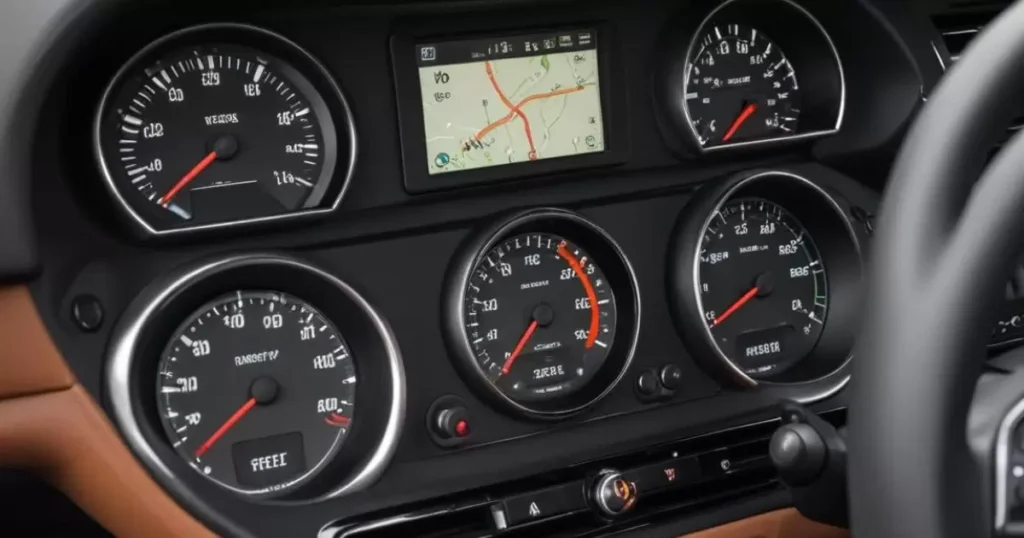Introduction
“Placing your front plate on the dashboard is usually illegal and can result in fines and legal issues.”
Determining the legality of placing your front license plate on your dashboard is crucial for vehicle owners aiming to stay compliant with state regulations. License plates serve as essential tools for vehicle identification and law enforcement, and improper display can lead to various legal and practical issues.
While some drivers may consider placing their plates inside the vehicle to avoid exterior mounting or aesthetic concerns, this practice often conflicts with legal requirements. Understanding the nuances of license plate regulations and the potential consequences of non-compliance can help you navigate these rules effectively.
This article delves into the purpose of front license plates, explores the legal requirements across different states, and examines whether placing your plates on the dashboard is permissible. By clarifying these aspects, we aim to ensure that you are well-informed and able to maintain adherence to the law.
Understanding Vehicle Plate Regulations

Vehicle plate regulations are crucial for maintaining order on the roads and ensuring that vehicles can be easily identified. License plates serve as a primary means for law enforcement and other authorities to track vehicle ownership and enforce traffic laws.
Each state in the U.S. has specific rules and regulations that dictate how and where these plates must be displayed. These regulations are designed not only to standardize vehicle identification but also to enhance safety and efficiency on the roads.
Typically, vehicle plate regulations require that both front and rear license plates be mounted in designated areas on the vehicle. This ensures that plates are visible from various angles and helps in the identification of vehicles involved in incidents or violations.
The rules governing plate display can vary significantly from one jurisdiction to another, and it’s essential for vehicle owners to be aware of and comply with their local regulations to avoid legal issues.
Additionally, the design and placement of license plates can impact other aspects of vehicle operation, such as safety features and aesthetics. For example, front plates can sometimes obstruct the vehicle’s grille or sensor systems, so regulations also consider these factors when determining the proper display of plates.
The Purpose of Front License Plates
Front license plates serve multiple purposes beyond just vehicle identification. One of their primary functions is to provide a clear view of the vehicle’s registration information from the front, which can be crucial for law enforcement and automated systems used in traffic monitoring and toll collection.
The placement of the front plate allows for a consistent and readily accessible method of identifying vehicles from all angles.
Another important purpose of front license plates is to deter criminal activity. With a visible plate on the front of the vehicle, it becomes more challenging for individuals to evade detection in case of criminal activities or traffic violations. This increased visibility can help in preventing and solving crimes, as well as in tracking stolen vehicles.
Furthermore, front license plates can play a role in ensuring compliance with state regulations regarding vehicle registration and insurance. They provide a way for authorities to quickly verify that a vehicle is properly registered and insured, thereby contributing to road safety and regulatory compliance.
Legal Requirements for Displaying License Plates
Legal requirements for displaying license plates are established to ensure that all vehicles on the road are identifiable and that their registration status is verifiable. In most states, the law mandates that both front and rear license plates be affixed to the vehicle in a manner that meets specific visibility and placement criteria.
This often includes rules about how the plates should be mounted and the height at which they should be displayed.
For instance, some states require that the front plate be mounted in a specific location on the front bumper, while others may have more flexible rules allowing for variations in placement. However, regardless of the specific regulations, the primary goal is to ensure that the plates are visible and readable from a reasonable distance.
Failure to comply with these regulations can result in fines or other legal penalties. It’s essential for vehicle owners to understand and adhere to their state’s specific requirements to avoid potential legal issues and ensure they are driving in compliance with the law.
Differences in Plate Display Laws by State
Plate display laws can vary widely from state to state, reflecting differences in local regulations and enforcement practices. For example, some states, such as California and New York, require that vehicles display both front and rear license plates. These states enforce strict penalties for not displaying the front plate as required, including fines and potential vehicle impoundment.
In contrast, other states, like Florida and Arizona, do not require a front license plate. These states allow vehicle owners the option to only display the rear plate, which can simplify the vehicle’s appearance and potentially reduce the risk of front plate-related issues, such as obstructions or damage.
The variation in plate display laws can also affect vehicle owners who travel between states. Drivers should be aware of the requirements in each state they visit to avoid inadvertent violations. Understanding these differences is crucial for maintaining compliance and avoiding legal complications while on the road.
Can You Put Your Plates Inside Your Vehicle?
Placing your license plates inside your vehicle, such as on the dashboard, is generally not compliant with most state regulations. The law typically requires that license plates be mounted in specific locations on the exterior of the vehicle to ensure visibility and accessibility. Placing plates inside the vehicle can obstruct their visibility, making it difficult for law enforcement and other authorities to read them from outside.
In some cases, drivers may attempt to place their plates on the dashboard to avoid drilling holes or damaging the vehicle’s exterior. However, this practice is usually considered a violation of state laws.
Most regulations stipulate that plates must be affixed to the vehicle in a manner that allows them to be seen clearly from a distance, which is not achievable if the plates are inside the vehicle.
If you have specific concerns or issues with mounting your plates, it is advisable to consult local regulations or seek guidance from law enforcement or a vehicle registration authority. They can provide information on acceptable alternatives or solutions that comply with the law while addressing your concerns.
The Importance of Visibility and Readability
The visibility and readability of license plates are fundamental aspects of their function. Plates need to be easily visible from various angles to ensure that law enforcement, toll systems, and other monitoring systems can accurately identify vehicles. This visibility helps in maintaining road safety, enforcing traffic laws, and facilitating the smooth operation of automated systems used for toll collection and traffic management.
License plates must be positioned in a way that ensures they are not obstructed by any part of the vehicle or by external elements such as dirt or snow. Regulations typically specify that plates should be mounted at a certain height and angle to maximize readability and ensure they remain visible under different driving conditions.
Moreover, clear and readable plates help prevent potential issues related to vehicle registration and identification. For example, if a plate is not clearly visible, it could lead to misunderstandings or disputes during traffic stops, toll charges, or legal proceedings.
UK Number Plate Rule Changes
Common Misconceptions About Plate Display
One common misconception about plate display is that placing plates inside the vehicle or on the dashboard is a viable alternative to mounting them on the exterior. Many vehicle owners believe this approach can avoid potential damage to the vehicle’s exterior or comply with aesthetic preferences. However, this practice is usually against legal requirements and can result in fines or other penalties.
Another misconception is that only the rear plate is necessary for cIt’s important for vehicle owners to understand their state’s specific requirements to avoid accidental violations.
Additionally, some drivers may assume that as long as the plates are visible from the front seat, they meet legal requirements. However, regulations typically require that plates be visible from outside the vehicle. Ensuring compliance involves more than just visibility from inside; it must be adequate from an external perspective as well.
Potential Consequences of Non-Compliance
Non-compliance with license plate display regulations can lead to various consequences, ranging from fines to more severe penalties. In states where front plates are required, failing to display the front plate can result in citations and fines. Repeated offenses or failure to correct the issue after receiving a citation can lead to increased penalties or even vehicle impoundment in extreme cases.
Beyond financial penalties, non-compliance can also create complications in legal situations. This could lead to further legal issues or complications for the vehicle owner.
Additionally, non-compliance can impact the vehicle’s insurance coverage. Insurance companies may have policies that require adherence to legal regulations, and failing to display license plates correctly could potentially affect claims or coverage in the event of an incident.
Alternatives to Dashboard Plate Display

If mounting license plates on the exterior of the vehicle is not feasible or desirable, there are alternative solutions that comply with legal requirements.
Another alternative is to use adhesive mounts or suction cups designed specifically for license plates. These options can help avoid drilling holes while still securing the plates in the required locations.
It is important to ensure that any alternative mounting solution is compliant with state regulations regarding plate placement and visibility.
Consulting with local vehicle registration authorities or law enforcement can provide additional guidance on acceptable alternatives. They can offer advice on solutions that meet legal requirements and address any concerns about mounting or displaying license plates.
Answers to Key Questions
1. Is it legal to put your front plate on your dashboard instead of mounting it on the front of your vehicle?
The legality of placing your front plate on the dashboard varies by jurisdiction. Placing a plate on the dashboard might not meet these legal requirements, and you could face fines or penalties if your local laws mandate proper plate mounting.
2. What are the potential legal consequences of not mounting your front license plate properly?
If you do not mount your front license plate according to local laws, you could face fines, penalties, or even a vehicle citation. The specific consequences depend on your area’s traffic regulations and enforcement practices. Repeated violations could lead to more severe penalties or issues with vehicle registration.
3. Are there any exceptions or special cases where placing the front plate on the dashboard is allowed?
Some jurisdictions may have exceptions for specific vehicle types or situations. For example, certain states may allow dashboard placement for cars with aesthetic modifications or for vehicles that cannot accommodate front plates due to design limitations. It’s essential to check local laws to understand any applicable exceptions.
4. Can I use a temporary dashboard placement if my front plate holder is damaged?
You should repair or replace the holder as soon as possible to comply with local regulations and avoid potential fines.
5. How can I find out the specific regulations for front license plate placement in my area?
To find out the specific regulations for front license plate placement, check with your local Department of Motor Vehicles (DMV) or equivalent agency. They can provide the most accurate and up-to-date information regarding legal requirements and any exceptions that may apply in your area.
Conclusion
In conclusion, placing your front license plate on the dashboard is generally illegal and can lead to fines and other legal consequences. Most states have strict regulations requiring that both front and rear plates be mounted on the exterior of the vehicle to ensure they are visible and readable.
If mounting the plates on the exterior is problematic, consider using alternative solutions such as license plate brackets or adhesive mounts that comply with state laws.
Always consult local regulations or authorities for guidance to ensure that you are in compliance. Proper plate display not only helps in maintaining legal compliance but also contributes to overall road safety and effective law enforcement.

Hi! I’m the admin of Drive Cars Pedia, where I share my passion for cars with you. From reviews to tips, I provide valuable info to help you make informed decisions. Enjoy your visit!








